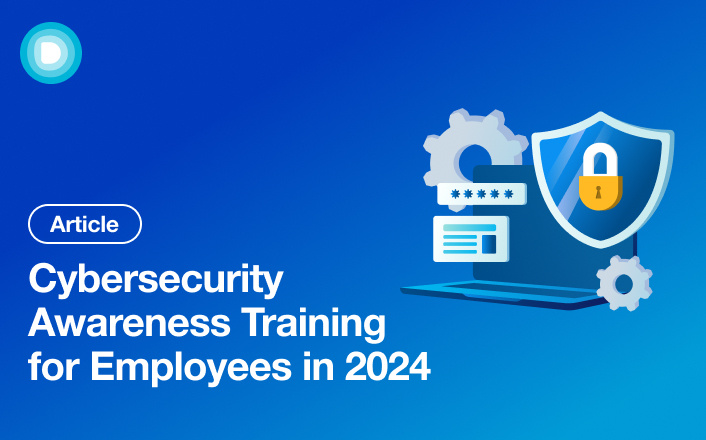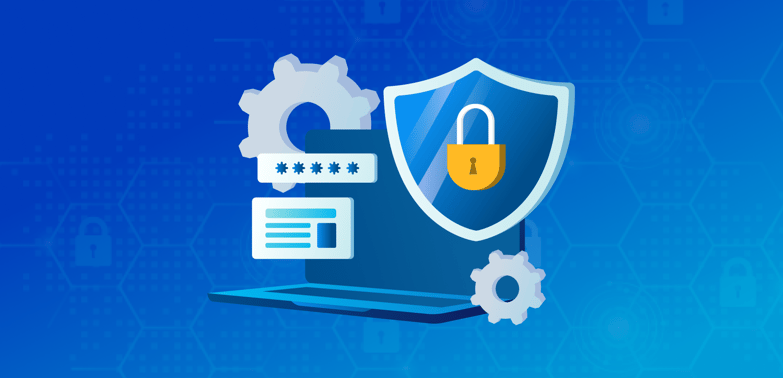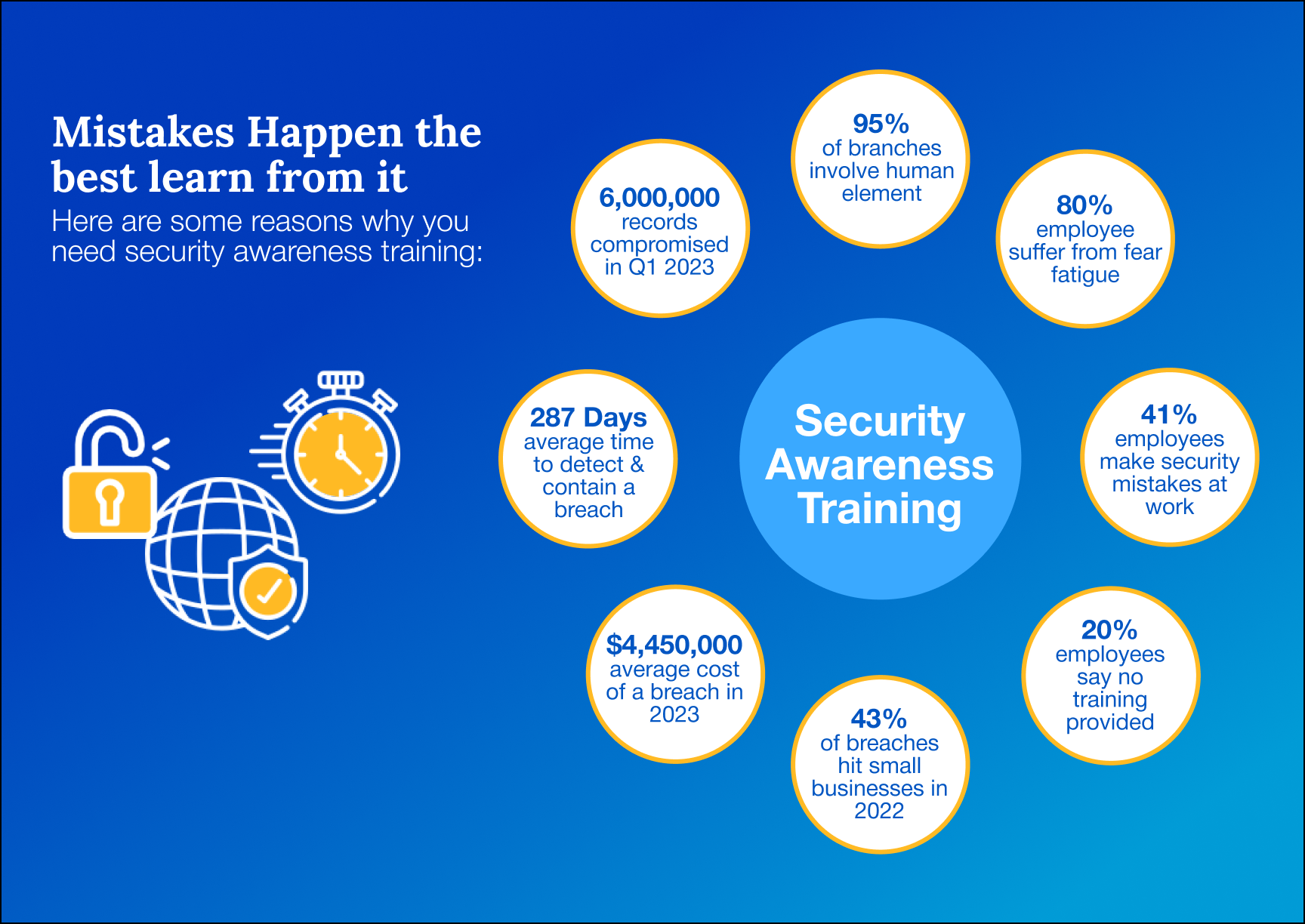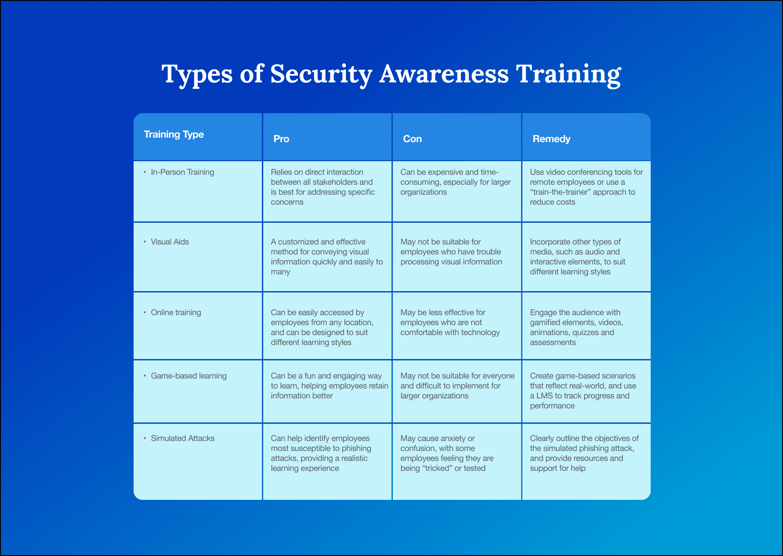- Product
-
Solution
-
By Industry
Cybersecurity solutions tailored to your industry’s needs.
-
- Resources
-
Books
Our ultimate guides and playbooks
Solution Briefs
Overview of PureDome’s functionality
-
Quizzes
Assess your cybersecurity readiness
Case Studies
PureDome customer success stories
Newsletter
Subscribe to the PureDome newsletter
-
- About Us
- Partner
- Pricing
- Download
Choosing the Right Type of Cybersecurity Awareness Training for Employees in 2024
-
Sharmeen Saleem
-
24 Apr 2024
- 2 min read


In 2021 and 2022, human error was responsible for 85% and 82% of the data breaches respectively. The World Economic Forum puts this figure at an astonishing 95%. CSOs everywhere continue to grapple with the question - are security awareness training even making a difference? Surveys say that most of these training programs are a chore to sit through.
Instead of teaching stakeholders like you and me about combating phishing attacks and social engineering scams, these courses try to shoehorn a laundry list of policies, behaviors, and regulations that miss the information highway for the trees.
How can you come up with the best way to upgrade security postures at the individual as well as organizational level? We believe the answer lies in making cybersecurity awareness training interesting. Let’s take a look.
What Is Cybersecurity Awareness Training?
The weakest link in an organization’s cybersecurity is the human link. Cybersecurity awareness training is the most potent way to fight back against cybercrimes by educating employees on risky behaviors.
We keep hearing about data breaches, phishing attacks, stolen credentials, and leaks of sensitive information every other day. The impact of cybercrimes continues to grow by 15% every year. However, companies that have a robust security awareness program that aligns with their goals experience a 70% reduction in incidents.
Here are some reasons why you need to undertake cybersecurity awareness training:

There’s no two ways about it. You need to train your employees. The challenge is - how to make existing cybersecurity awareness programs more effective, engaging, and fun?
Types of Cybersecurity Training Methods
Most cybersecurity training modules rely on video lectures and online classrooms that teach how to reduce the likelihood of common social engineering attacks.
However, security vendors are increasingly tapping into new ways of making cybersecurity interesting. Here are a few types of cybersecurity awareness training methods in use today:

Types of security awareness training | Source: Pureversity
All of these security awareness training can teach you:
- How to identify the warning signs behind common cyber threats?
- How to respond to specific threats and mitigate damage?
- How do we prevent these threats from proliferating further?
Organizations of varying sizes and industries can benefit from this training. However, which type of security training can help them protect themselves better?
The Challenge of Keeping Employees Engaged with Security Training
In recent years, methods like phishing simulations and game-based learning have grown in popularity when it comes to imparting essential security skills. Some of them are going one step further by combining traditional role-playing game mechanics with cybersecurity training.
27% of employees don’t bother finishing training because of how dry traditional cybersecurity lessons are structured. Game-based training addresses this by putting learners at the center - with real stakes and the ability to dictate outcomes. They learn by doing within the confines of an immersive environment.
The idea is to help average Joes and Janes develop long-lasting security-conscious habits and mindsets, thwarting the designs of cybercriminals significantly.
Conclusion - Choose the Right Type of Cybersecurity Awareness Training for Your Organization
Security leaders like CSOs need to ask themselves these questions about their training programs:
- Is this training engaging?
- Does it hold my attention?
- Does it make learners curious about discovering more?
Whether it is learning about how to treat mysterious URLs in phishing emails or how to create strong passwords, security awareness training covers it all.
With a gamified security awareness training platform, employees are 40% more likely to retain knowledge and tips on how to deal with phishing, ransomware, malware, and other types of social engineering scams.
It’s hard to prevent a human mistake from affecting your organization and its data. But it's certainly not impossible. We just need to rethink how current cybersecurity awareness training programs are designed - for human beings who want to learn while having fun.